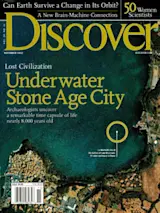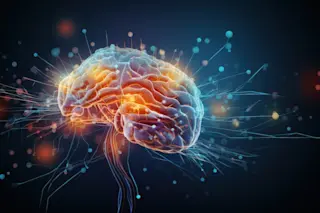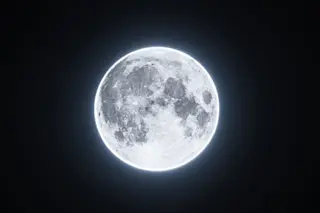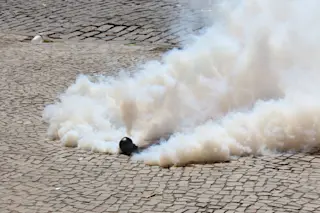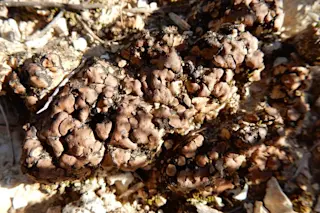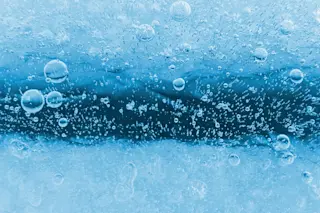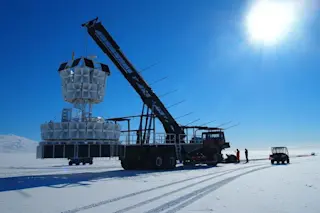Three percent of tenured professors of physics in this country are women. Nonetheless, a woman physicist stopped light in her lab at Harvard. Another woman runs the linear accelerator at Stanford. A woman discovered the first evidence for dark matter. A woman found the top quark. The list doesn't stop there, but the point is clear.
Three years ago, Discover started a project to look into the question of how women fare in science. We knew there were large numbers of female researchers doing remarkable work, and we asked associate editor Kathy A. Svitil to talk to them. The result of her investigation is a selection of 50 of the most extraordinary women across all the sciences. Their achievements are detailed here.
To read their stories is to understand how important it is that the barriers facing women in science be broken down as quickly and entirely as possible. If just one of these women had gotten fed up and quit — as many do — the history of science would have been impoverished. Even the women who have stuck with it, even those who have succeeded spectacularly, still report that being a woman in this intensely male world is, at best, challenging and, at worst, downright disheartening. It will take goodwill and hard work to make science a good choice for a woman, but it is an effort at which we cannot afford to fail. The next Einstein or the next Pasteur may be alive right now — and she might be thinking it's not worth the hassle.
Ruzena Bajcsy
Professor of Electrical Engineering and Computer Science, University of California at Berkeley
In 1979 Bajcsy helped create robots that could sense and respond to their environment. She now heads an innovative institute where researchers develop smart low-power sensors that both compute and communicate. Bajcsy believes the sensors will be "the next revolution in technology." They can monitor energy consumption in buildings, watch for forest fires, or keep tabs on people by, for example, calling 911 if a person with Alzheimer's disease wanders from his home.
Jacqueline K. Barton
Professor of Chemistry, California Institute of Technology
Barton discovered that DNA conducts electric current but not as well — or not at all — when its tight organization is disrupted by damage from certain chemicals or mutations. That finding should allow researchers to look for mutations, using chips made of strands of DNA attached to gold on silicon wafers. Barton is investigating whether nature has developed tactics to cope with such damage: "Are there important sites that are insulated? Where are electrons funneled? This makes us think about DNA in an entirely new way."
Anna K. Behrensmeyer
Research Paleobiologist, Smithsonian Institution
Behrensmeyer has spent almost three decades at Amboseli Park in Kenya watching animals disintegrate and fossilize as she researches taphonomy — the science of burial. "There is a bias in the fossil record caused by all of the factors that determine whether or not something becomes a fossil. Did it have hard parts? Did it die in the water where it could more easily be buried and preserved?" That bias, says Behrensmeyer, gives us only a relatively small window to the past. "My work tries to illuminate what we can see through that window."
Elizabeth Blackburn
Professor of Biochemistry and Biophysics, University of California at San Francisco
Each time a cell divides, its chromosomes shorten slightly. To protect vital genes from being lopped off, chromosomes are capped with telomeres, blocks of DNA and protein. Telomeres are maintained by telomerase, an enzyme discovered by Blackburn (see story Why science must adapt to women) and biologist Carol Greider. In most healthy cells, telomerase production eventually ceases, telomeres whittle down, and the cell dies. Blackburn's research has shown that in cancer cells, the enzyme never shuts off, and cells become immortal: "Telomerase is reactivated in about 90 percent of tumors. It is a great favorite of cancer cells," and thus a target for new drugs.
Sarah Boysen
Professor of Psychology, The Ohio State University
Boysen's colony of 11 chimpanzees are often as rambunctious as a class of preschoolers, and her research shows they share another trait with toddlers: the ability to do simple arithmetic. The chimps can add, subtract, understand fractions, and associate Arabic numerals with the quantity of objects they represent. "We attribute to the human mind the ability to put information together in novel and innovative ways," she says. "But there are other minds on the planet that can spontaneously create new ways to process information and solve problems."
Rita Colwell
Director, National Science Foundation
Her day job "saturates" her time, but Colwell says she would feel "starved" without her research on cholera, now 25 years deep. "We took this elegant, interdisciplinary research involving molecular biology, oceanography, remote sensing, and clinical medicine and came up with a very simple technique to prevent the disease: filtering water through sari cloth." That strategy, she found, reduces the number of cases by roughly 50 percent. "This is the kind of holistic approach we need to solve complicated scientific issues."
Margaret Conkey
Director, Archaeological Research Facility, University of California at Berkeley
"There has long been a heavy bias toward seeing the whole human past in terms of male action," says this expert in prehistoric art who encourages anthropologists to reinterpret ancient images and objects. "I have been trying to convince people that we can't explain 20,000 years of material by saying it was all magic for the hunt." She heads a team that surveys the landscape in southern France, searching for traces of the day-to-day lives of the cave painters.
Esther Conwell
Professor of Chemistry, University of Rochester
Half a century ago, Conwell's research on how electrons course through silicon and other semiconducting materials jump-started the computer age. Now she studies the movement of electrical charges through DNA. "The motion of charge in DNA can lead to mutations that can be cancer producing. And the properties of DNA could be useful in assembling circuit elements in nano-electronic circuits."
Gretchen Daily
Research Professor, Stanford University
The key to protecting ecosystems and preserving biodiversity successfully, says Daily, is to recognize the economic value of services that nature provides. "Ecologists used to be totally impractical in their recommendations to policymakers, while economists totally ignored the natural capital base upon which human well-being depends," she says. Her work helped spur a revolution in conservation policy, uniting economists and ecologists. "I've been lucky to be part of a movement that produced new partnerships between them."
Ingrid Daubechies
Professor of Mathematics and Applied and Computational Mathematics, Princeton University
To analyze the signal of an image, sound, electrocardiogram tracing, or even a turbulent gas, one must break it down into simpler parts. The parts that scientists and engineers use are Daubechies's wavelets — mathematical building blocks that are also used for data compression and encryption. "If you painted a picture with a sky, clouds, trees, and flowers, you would use a different size brush depending on the size of the features," says the mathematician. "Wavelets are like those brushes."
Persis Drell
Director of Research, Stanford Linear Accelerator Center
Growing up, Drell, whose father is a theoretical physicist, met some of the most famous physicists of the 20th century, "and yet I was determined to be a mathematician." Then a teacher in college made physics seem exciting to her. Now, using giant particle colliders, she studies elementary particle physics. "We're trying to figure out what the world is made of at its most fundamental level. Because I have young kids, I think of it as finding the smallest Lego that you can make everything else out of."
Mildred S. Dresselhaus
Professor of Physics and Electrical Engineering, MIT
Before her fourth child hit kindergarten, Dresselhaus deciphered the electronic structure of graphite, the lowest-energy solid-state form of carbon. The daunting problem had long scared off other researchers, which is why she chose it: "I wanted to be able to move more slowly, without so much competition." Her other groundbreaking studies contributed to the discovery of buckyballs and carbon nano-tubes.
Sylvia Earle
Explorer in Residence, National Geographic Society
This oceanographer, diver, and developer of deep submersibles is systematically surveying U.S. marine-protected areas. For three decades, she has campaigned for public awareness of the need to protect ocean systems. "What we discover has to affect public policy," she says. "If people understand how important the ocean is and how it influences our daily lives, they'll be inclined to protect it, not just for its sake but for our own."
Sandra Faber
University Professor, UCO/Lick Observatories, University of California at Santa Cruz
The orbital speed of stars varies with their galaxies' brightness. That discovery, made by Faber in 1975, "showed that galaxies were made according to some kind of regular process." She and other researchers later discovered that the process originated 10-35 seconds after the Big Bang, when density fluctuations created the seeds of galaxies. "We can look at the Milky Way and know that the roots of that structure go back to practically the very beginning," she says. Faber also diagnosed the Hubble Space Telescope's optical flaw and helped design the massive Keck telescopes in Hawaii.
Melissa Franklin
Professor of Physics, Harvard University
"I build things, and then I fix them when I build them badly," says the experimental physicist, offering a deceptively modest description of her work. The objects she tinkers with are complex particle detectors, including the powerful proton-antiproton Collider Detector at Fermilab in Batavia, Illinois, which she used to spot the top quark in 1995.
Patricia S. Goldman-Rakic
Professor of Neurobiology, Neurology, and Psychiatry, Yale University
The persistent firing of neurons in the prefrontal cortex is the "glue of consciousness," says neurobiologist Goldman-Rakic. "It allows one event in time to connect to another and forms our working memory." Her pioneering studies show that when this circuitry breaks down because of, for example, fetal damage or substance abuse, our thinking gets derailed, and we're easily distracted and confused. "The inability to keep a coherent line of thought is one of the cardinal symptoms of schizophrenia and other memory disorders like Alzheimer's, Parkinson's, and childhood attention-deficit disorder."
Elizabeth Gould
Professor of Psychology, Princeton University
As a child, Gould wanted to be an artist, but she found "a great deal of creativity in science." Her work has proved that the brain is not, as previously thought, full of a given number of cells that can never be replaced. Instead, throughout life, neurons sprout in the hippocampus, perhaps forging new memories, while others die from stress or wither from disuse. "Although I once was surprised to find that experience causes new neurons to grow, it makes perfect sense that the brain would evolve throughout life."
Beatrice H. Hahn
Professor of Medicine and Microbiology, University of Alabama at Birmingham
About 70 years ago, a global pandemic that has claimed more than 60 million lives began after HIV-1, the virus that causes AIDS in humans, jumped from chimpanzees to people. Hahn's studies show that one subspecies of chimp — Pan troglodytes troglodytes, native to west central Africa — is the most likely natural reservoir of the virus. The "$50 million question," she says, is why the chimps don't appear to get sick. "The answer will provide critical clues as to why we do."
Heidi Hammel
Senior Research Scientist, Space Science Institute, Boulder, Colorado
Getting respect for the planet Uranus has become Hammel's personal mission. "Textbooks describe Uranus as boring," she says, "but that's because the Voyager 2 probe flew by it during an uninteresting season." Uranus is tipped on its side, with its rotation axis almost horizontal, so one half stays in total darkness and the other in total sunlight for up to 21 years at a time. "We are now seeing the northern hemisphere for the first time, and the seasonal changes are fascinating to watch." She also keeps a close eye on Uranus's cousin Neptune.
Lene Vestergaard Hau
Professor of Applied Physics, Harvard University
Hau was the first to bring light, which moves at a constant, breakneck pace of 186,282 miles per second in a vacuum, to a screeching halt. She did it within a cloud of sodium atoms cooled to a few billionths of a degree above absolute zero. Although the beams of light can't be seen under such conditions, their information is imprinted on the sodium cloud "as if we were writing a hologram. When we feel like it, we let them loose again and send them on their way," says the physicist, who is trying to miniaturize the experiment.
Darleane C. Hoffman
Professor of the Graduate School, University of California at Berkeley
The very heaviest elements, those more massive than plutonium, are also the most elusive, with very short-lived stable states. Hoffman, who headed the team that first discovered plutonium 244 in nature, leads the search for those elements' mysterious properties. Nuclear science, she points out, was started in large part by women, among them Marie Curie. "If anything, women were prominent because it wasn't an established field, and so it was easier to break into."
Kathleen Howell
Professor of Aeronautical and Astronautical Engineering, Purdue University
NASA and other space agencies have long relied on brute force — and a lot of fuel — to get spacecraft to their destinations. A more efficient technique, developed by Howell, plays off the unseen free energy in the solar system. "The gravity fields of the system's different objects create natural pathways that a spacecraft can follow," says Howell. The astronautical engineer and one of her grad students designed such a trajectory for NASA's low-fuel Genesis probe, launched in 2001, which will collect samples of solar wind and return them to Earth in September 2004.
Sarah Blaffer Hrdy
Professor Emeritus of Anthropology, University of California at Davis
"All of my work is tied to the evolution of family relationships," says the woman who started her career investigating why male langur monkeys sometimes kill the babies of other males (she found it's an evolutionary strategy that increases their own reproductive success) and now focuses on infant care by parents and others. "Although I try to be objective in my science, what draws me to topics — female sexuality, maternal love, maternal ambivalence — is the need to understand something better about myself. "
Shirley Ann Jackson
President, Rensselaer Polytechnic Institute
The second African American woman in the United States to earn a doctorate in physics, Jackson says her science education informed her work as an administrator, first as chair of the U.S. Nuclear Regulatory Commission and now at Rensselaer: "I was educated to address complex problems by having an intuition about the answer and by learning to break the problems down into parts that can more easily be solved. So I view myself as both a visionary and a pragmatist."
Deborah Jin
Physicist, National Institute of Standards and Technology
Jin's colleagues first created the Bose-Einstein condensate, a super-cold new form of matter. She used magnetic traps and lasers to create a similar state with fermions. Fermion gas was teased down to less than one-third of a millionth of a degree above absolute zero, a temperature at which particles act like waves. The resulting quantum gas could shed light on how superconductors work. "These experiments," Jin says, "are exploring the limits of how cold you can get in the lab."
Mary-Claire King
Professor of Medicine and Genetics, University of Washington School of Medicine
As a grad student, King showed that chimpanzees and humans are 99 percent genetically alike. Fifteen years later, she proved that breast cancer can be inherited. She has used polymerase chain reactions and genetic sequencing to reunite kidnapped Argentinean children with their families and also identified the remains of Americans missing in action and war crimes victims in Bosnia. "The remarkable thing about genetics is that you use the same way of thinking to identify disappeared children and the genes responsible for inherited breast cancer."
Susan Lindquist
Director, Whitehead Institute for Biomedical Research at MIT
"There is much more richness to biology and the biology of proteins than we'd ever previously believed," says one of the world's leading experts on prions, the misfolded proteins that cause mad cow disease. Her work has shown that, like DNA, proteins can carry inherited traits through generations. "It has been said that you can't understand biology until you understand evolution. I would argue that you can't understand evolution or biology until you understand protein."
Barbara Liskov
Professor of Engineering, MIT
Liskov's work in data abstraction in the 1970s paved the way for writing far more complex and subtle computer programs. She was also a key figure in the development of applications that run on distributed collections of computers connected by a network. Now she concentrates on Byzantine fault-recovery programs, which protect sensitive data from malfunction and malicious attacks.
Margaret A. Liu
Vice Chairman, Transgene, Strasbourg, France
HIV mutates so quickly that it can outmaneuver traditional vaccines made from viral proteins or weakened viruses. Worse, a vaccine made from a weakened virus could prove deadly if the virus mutated and regained virulence. Liu's work has shown that DNA may offer "the hope of better, more stable vaccines that can be rapidly produced." DNA injected as a vaccine might signal the body to churn out proteins that protect against HIV by provoking an immune response to the virus.
Jane Lubchenco
Professor of Marine Biology and Zoology, Oregon State University
Dubbed "Calamity Jane" by one critic, Lubchenco is fearful about the state of the earth: "The oceans and other ecosystems are in very serious trouble, and we need to think about, treat, and value them differently," she says. Although her specialty is rocky, intertidal-zone communities of life, Lubchenco has done landmark work assessing the impact of the human footprint on Earth's ecosystems and calculating the economic value of nature's services.
Shannon W. Lucid
Chief Scientist, NASA
Although she is preoccupied with framing NASA's scientific vision, this former astronaut would go back to space "this instant" if given the chance. Until last June, the biochemist held the American single-flight endurance record — 188 days aboard the Russian Mir space station. She says the voyage was never boring: "I was living two seconds away from my laboratory, so I could wake up in the morning, think, 'What kind of exciting science can I do today?' and immediately get to work."
Lynn Margulis
Distinguished Professor, University of Massachusetts at Amherst
"People say I am against Darwin. That is ridiculous," says the evolutionist, who argues against the conventional wisdom commonly but incorrectly attributed to Darwin that random mutations lead to new species. "Darwin didn't know how species originate," says Margulis, who thinks new species evolve from the symbiotic merger of organisms. According to her widely accepted theory, the fusion of early bacteria gave rise to the first nucleated cells. Further mergers produced their chloroplasts, mitochondria, and other cellular structures.
Polly Matzinger
Head, T-Cell Tolerance and Memory Section, National Institutes of Health
Matzinger argues that the immune system doesn't respond blindly to foreign invaders but to the alarm calls of injured tissue. Her "danger model" suggests new ways to treat cancer and sustain transplants, as well as immunize newborns: "A few scientists still aren't listening, but I'm not going to do the work to make them. The evidence is there." She is now studying how the body decides what type of immune response to mount once it has detected a threat.
Marcia McNutt
President and Chief Executive Officer, Monterey Bay Aquarium Research Institute
The first woman to run a freestanding oceanographic institute in the United States, McNutt oversees a staff of more than 200. She has a gift for encouraging scientists and engineers to work together: "In that way, we've developed some of the world's best instruments and platforms for deep-sea research," she says. "If we got bigger, it might break down the collaborative nature of what we do." Although administrative duties afford her little time for research, she still manages to study submarine hot spots.
Cherry Murray
Senior Vice President, Bell Labs' Lucent Technologies
Murray stays "kind of busy" overseeing a staff of more than 150 scientists and developing the research strategy for Lucent Technologies. But she also manages to squeak out time for cutting-edge work on colloidal systems — suspensions of small particles that don't settle or dissolve in a liquid. Her studies probe the mysteries of phase transitions, changes from one state of matter to another.
Adriana C. Ocampo Uria
Planetary Scientist, European Space Agency
In 1989, while examining satellite images of Mexico's Yucatán peninsula, Ocampo Uria spotted the 130-mile-wide Chicxulub crater — the scar left behind by the asteroid impact that may have wiped out the dinosaurs 65 million years ago. She continues to study the crater "to understand how this event could have not only caused a mass extinction but also how it affected the evolution of life."
Mercedes Pascual
Assistant Professor of Ecology and Evolutionary Biology, University of Michigan
The complex systems models developed by Pascual help make sense of complicated, irregular cycles in ecosystems. Two years ago, the mathematical ecologist found that El Niño climate patterns can help trigger cholera outbreaks in Bangladesh. This summer, she and her colleagues compared cholera and climate records from the early 20th century with recent data and found that El Niño episodes have become more forceful drivers of disease outbreaks. It is the first quantitative evidence, she says, "for an effect of global climate change on an infectious disease."
Maureen Raymo
Research Associate Professor, Boston University
The geologist's controversial "uplift hypothesis" maintains that the rise of mountain ranges such as the Himalayas causes a reverse greenhouse effect and explains why Earth's climate has chilled for 40 million years. She says "the weathering of mountain ranges scrubs CO2 out of the atmosphere, which can lead to global cooling. We have such a rudimentary understanding of the carbon cycle — which controls life on Earth — that anything we learn about it will help us understand future change."
Janet Rowley
Professor of Medicine, Division of Hematology and Oncology, University of Chicago Medical Center
One afternoon in 1972, sitting at her dining room table studying images of the chromosomes of a leukemia patient, Rowley noticed that chunks from two chromosomes had swapped places. This swapping, or translocation, is now known to cause several forms of cancer. "It fuses together pieces of two genes that are normally far apart, creating a new gene that turns the cell malignant," says the physician. "By knowing what those genes do, we can develop targeted drug treatments." One, Gleevec, is already on the market.
Vera Rubin
Senior Fellow, Carnegie Institution of Washington
Rubin's pioneering astronomy research suggests that some 90 percent of the universe's mass remains unseen. She has watched galaxies spin and found that stars at the outskirts don't creep slowly along as expected. Instead, they move quickly, pulled around by the gravity of dark matter. "If you are an observational astronomer," she says, "it's hard to study something that you cannot see, so we study things we can and hope they'll lead us to a unique answer about what dark matter is. But we aren't there yet."
Geraldine Seydoux
Associate Professor of Molecular Biology and Genetics, Johns Hopkins University
Using the lowly worm, Caenorhabditis elegans, Seydoux is deciphering the earliest stages of development, when germ cells that become reproductive tissues first form — knowledge that's crucial for understanding reproduction and may lead to cures for infertility. "This work also has a bearing on stem cells," says Seydoux, "which of course have great therapeutic potential."
Maxine Singer
President, Carnegie Institution of Washington
During her research career, this molecular biologist has investigated the organization of the human genome and helped draft the first safety guidelines for genetic engineering. Now, in addition to leading Carnegie, Singer has set up training courses for schoolteachers in Washington, D.C. "It is essential that children get science education when they are little, so they learn that science is fun and learn how to think about the natural world. By and large, teachers are just not equipped to do this."
Susan Solomon
Senior Scientist, National Oceanic and Atmospheric Administration
In 1986 Solomon decided to lead an expedition to Antarctica to investigate the newly discovered ozone hole over the continent. "I was a theoretician at the time and sat in my nice warm office with my keyboard. But I was young and foolish, and it sounded like a great adventure," says the atmospheric chemist. Solomon's research in Antarctica played a key role in proving that ozone loss was caused by man-made chemicals called chlorofluorocarbons.
Jill Tarter
Director, Center for SETI Research at the SETI Institute, Mountain View, California
"I have the best job in the world," says the astronomer. "I get to use the tools of modern science and technology to try to answer a question humans have asked throughout history: 'Are we alone?'" Tarter oversees construction of an array of 350 radio telescopes that will listen for a sign of extraterrestrial intelligence. "While I keep champagne on ice, I realize it may be my granddaughter, or her granddaughter, who will succeed."
Shirley Tilghman
President, Princeton University
Tilghman steals away to her molecular biology lab every Friday to study genetic imprinting, the strategy mammalian parents employ to further their competing reproductive interests. Tilghman says that fathers, "who have no investment in the nutrition of their offspring, want them as large as possible because large offspring survive better in the wild, while mothers want them smaller. So fathers silence genes that slow down growth, and mothers silence genes that promote growth. It's like an arms race. What is optimum for the species is balancing those opposite inclinations."
Patty Jo Watson
Professor of Anthropology, Washington University in St. Louis
For more than 2,000 years, Native Americans forayed into the deep chambers of Kentucky's vast Mammoth Cave system. Watson has spent four decades tracking their movements and sifting through their refuse: charred bones, and the seeds, nuts, and other bits of food in paleo-fecal material, establishing the best qualitative and quantitative data for an early agricultural complex in North America. She says the caves "are a universe of their own, with almost inexhaustible research potential." She has also helped introduce the scientific method into archaeological studies.
Sheila Widnall
Professor of Aeronautics and Astronautics, MIT
Blow a smoke ring and notice that in calm air, it undulates gently. Those wiggles are termed the "Widnall instability," and, by discovering them, this scientist rewrote the book on fluid dynamics. "People began seeing such structures everywhere and had to find ways to incorporate them into their models of turbulent flow," she says. Former secretary of the Air Force, Widnall leads a program at MIT that searches for ways to improve the efficiency of the aerospace industry.
Terrie Williams
Professor of Biology, University of California at Santa Cruz
Although Williams studies the physiology of large predators, from cheetahs to killer whales, she specializes in marine mammals. Her innovative use of video cameras and computer modeling has offered unprecedented insights into the behavior of species previously unobserved in their daily routines. She has shown that dolphins and other marine mammals spend a lot of time gliding rather than swimming to reduce oxygen consumption. The finding solved the mystery of how they manage to stay underwater as long and dive as deeply as they do.
Flossie Wong-Staal
Chief Scientist, Immusol, San Diego
In 1985 molecular biologist Wong-Staal and her colleagues were the first to clone HIV-1 and create a map of its genes, which led to a test for the virus. Today she looks for new drugs to fight AIDS and other diseases. Her most recent strategy for combating HIV focuses on understanding genes in humans that help the virus enter cells and successfully infect a host. Attacking HIV directly has failed, she says, "because the virus is a moving target and can readily develop resistance."
Maria Zuber
Professor of Geophysics and Planetary Science, MIT
Using laser ranging, gravity measurements, and data from spacecraft, Zuber maps surface features and probes the interior of Mars, Venus, Jupiter's moons, and our own moon. Her goal is to "figure out the processes that acted on a particular body in the past in order to make its surface the way it is now."
Fame Passed Them By
History has not always been kind to women scientists. Many have passed long days and nights in the lab stirring noxious concoctions or gathering piles of data only to see the credit for their discoveries awarded to a male colleague. Sometimes the work was obscured by a famous mentor. Here is a selection of female scientists who deserve greater notice:
Lise Meitner (1878-1968)
In 1938, after she escaped from the Nazis to Sweden, she carried out the key calculations that led to the discovery of nuclear fission. Her collaborator, Otto Hahn, who stayed behind in Germany, was the sole recipient of the Nobel Prize in chemistry in 1944. In 1997 Meitner was finally honored when element 109 was named meitnerium.
Emmy Noether (1882-1935)
She devised a mathematical principle, called Noether's theorem, which became a foundation stone of quantum physics. Her calculations helped Einstein formulate his general theory of relativity. "It is really through her that I have become competent in the subject," he admitted.
Frieda Robscheit-Robbins (1893-1973)
Together with George Whipple, she discovered that a diet rich in liver cured anemia in dogs, which in turn led directly to treatment for pernicious anemia in humans. Although she coauthored numerous papers with Whipple, it was he who was honored with the 1934 Nobel Prize in medicine.
Hilde Mangold (1898-1924)
Under the guidance of Hans Spemann, she carried out the experiments that led to the discovery of the organizer effect, which directs the development of embryonic cells into tissues and organs. She died after being set afire by an alcohol stove on which she was heating food for her baby. Eleven years later, Spemann won the Nobel Prize.
Cecilia Payne-Gaposchkin (1900-1979)
In her 1925 Ph.D. thesis — described by the noted astronomer Otto Struve in 1960 as "the most brilliant ... ever written in astronomy" — she proposed that all stars are made mostly of hydrogen and helium. Astronomers dismissed her observations until four years later, when they were confirmed by a man. She was the first woman to become a professor of science at Harvard.
Beatrice "Tilly" Shilling (1909-1990)
A prize-winning motorcycle racer and aeronautical engineer, she designed a small metal ring that fit onto the fuel line of an aircraft engine to keep the flow of fuel constant. This enabled World War II British fighter pilots to dive without fear that their engines would cut out.
Chien-Shiung Wu (1912-1997)
In 1957 she and her colleagues overthrew a principle previously considered immutable in physics: that nature does not distinguish between right and left. Chien-Shiung found that this rule does not hold true for interactions between subatomic particles involving the so-called weak force. The Nobel Prize was awarded to two male colleagues.
Rosalind Franklin (1920-1958)
Her X-ray photographs of crystallized DNA, taken in the early 1950s, proved that the molecule was a helix. This data was used, without her knowledge, by James Watson and Francis Crick to elucidate the structure of DNA. By the time they were awarded the Nobel Prize in 1962, Franklin had died of ovarian cancer.
Jocelyn Bell Burnell (1943-)
With the aid of a radio telescope she built herself, she became the first astronomer to detect pulsars — rapidly spinning, extremely dense neutron stars. But she was deemed too inexperienced to receive the Nobel Prize, which was given instead in 1974 to her thesis adviser, Anthony Hewish — a man who later referred to her as "a jolly good girl [who] was just doing her job." — Josie Glausiusz


